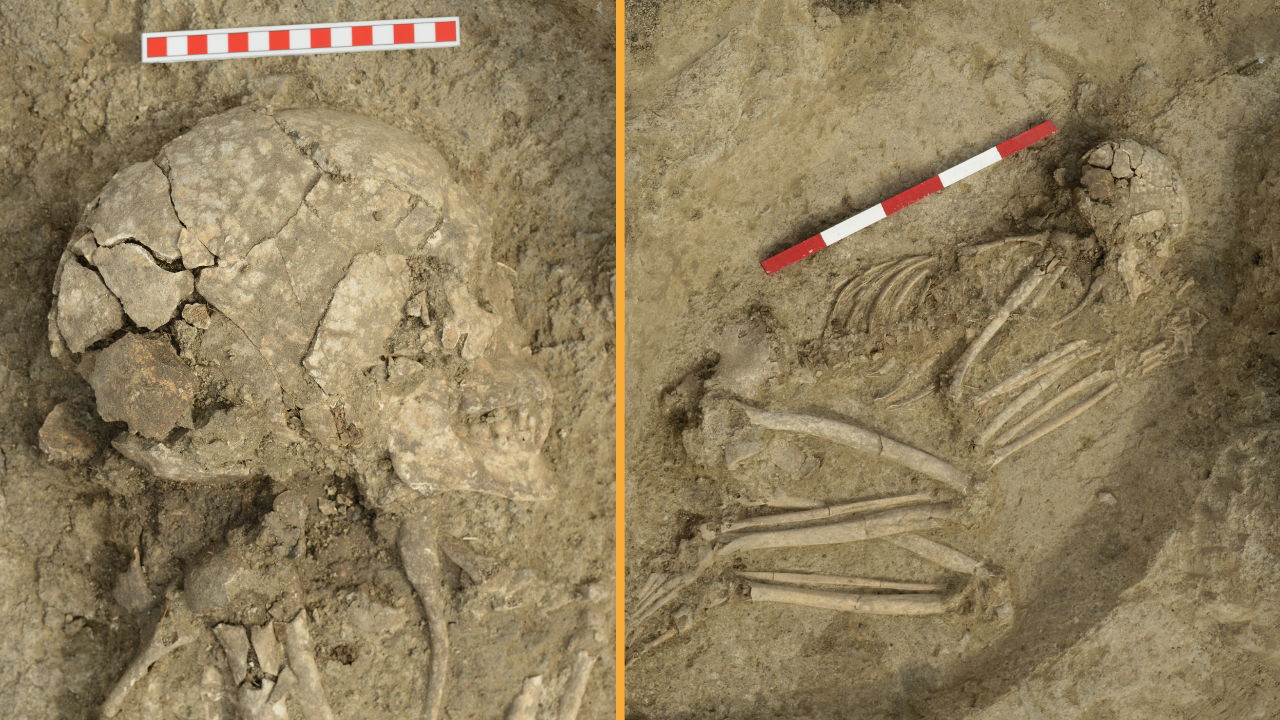Space photo of the week: James Webb telescope snaps stunning 'tapestry of star birth' peppered with cavernous galactic voids
Two new James Webb Space Telescope images show off massive bubbles carved out of a stellar nursery by giant, baby stars growing in a nearby galaxy.

What it is: Star-forming region NGC 604.
When it was published: March 9, 2024.
Where it is: 2.73 million light-years from Earth.
Why it's so special: The James Webb Space Telescope (JWST) recently captured two highly detailed photos of the gigantic star-forming region NGC 604: one using its Near-Infrared Camera (NIRCam), which shows the region in red and orange; and another using the Mid-Infrared Instrument (MIRI), which captured pale blue hues.
Both images highlight cavities, or bubbles, carved out of the surrounding gas and dust by young, rapidly growing giant stars. Previous images of NGC 604 have never revealed these pockets of emptiness in so much detail.
The photos "etch a more detailed and complete tapestry of star birth than seen in the past," NASA representatives wrote in a statement.
Get the world’s most fascinating discoveries delivered straight to your inbox.

NGC 604, which spans around 1,300 light-years across, is located in the Triangulum Galaxy (Messier 33). The stellar nursery is around 3.5 million years old, which is relatively young for this type of structure.
The region contains around 200 stars, all of which are either B-type or O-type stars — two of the largest types seen in the universe. B-type stars are often around 10 times more massive than the sun, while O-type stars can be up to 100 times the mass of our home star. Both types are also several times hotter than the sun.
"It's quite rare to find this concentration of them [B- and O-types] in the nearby universe," NASA representatives wrote. "In fact, there's no similar region within our own Milky Way galaxy."
The clouds of material in the photos, which appear orange and red in the NIRcam image and pale blue in the MIRI image, are predominantly made up of molecular hydrogen and polycyclic aromatic hydrocarbons (PAHs), which both play an important role in star formation. The molecular hydrogen comes from dead stars that exploded in supernovas, but scientists are unsure where PAHs originate in space, according to NASA.
The main difference between the two images is that fewer stars are visible in the MIRI image. This is because stars shine less brightly in mid-infrared, so the dimmest stars can't be seen.

Harry is a U.K.-based senior staff writer at Live Science. He studied marine biology at the University of Exeter before training to become a journalist. He covers a wide range of topics including space exploration, planetary science, space weather, climate change, animal behavior and paleontology. His recent work on the solar maximum won "best space submission" at the 2024 Aerospace Media Awards and was shortlisted in the "top scoop" category at the NCTJ Awards for Excellence in 2023. He also writes Live Science's weekly Earth from space series.


